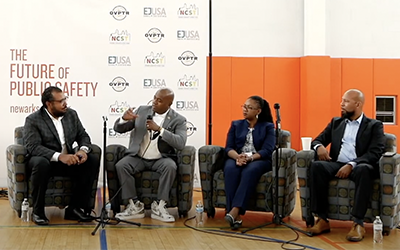Pillar 3: Political and Institutional
Newarkers are aware of their political struggles and achievements. They have been on the frontlines, claiming those victories and growing as a community since the 1967 uprisings.

A long line of leaders has stepped forward across time, in both prominent official roles and as beacons of the grassroots movement. Collectively, they have inspired multiple generations of their community and brought belonging, creativity, and passion to their advocacy. As leading figures during the civil rights movement, as educators, as everlasting poets of the resistance, they have inspired a compelling coexistence between political action and activism.
Alongside the names that inspire leadership, there are the names that inspire the search for justice. Nashika Allen is one of those names. Her death by gun violence in 2009 inspired peaceful street interventions hosted by a group of organizations and activists that came together as the Newark Anti-Violence Coalition (NAVC). They assembled five core demands — ranging from specifics around police leadership to reclaiming control of city schools — then staged protests advocating for those demands every Wednesday for 155 weeks straight, across the city at different traffic intersections.
Many of the city’s current leading voices participated in NAVC’s 155 weeks of protest, including Mayor Ras J. Baraka, who was first elected to city council for the South Ward in 2002. His election in these representative roles is a symbol of a renewed style of leadership. His style is anchored to social mobilization and fueled by the commitment to live to see Newark communities thrive and to create alternatives for those impacted by violence and disenfranchisement. Over time, political action and activism combined in a way that is not necessarily oppositional. A culture of accountability and belonging to grassroots mobilization is responsible for the dismantling actions taken in response to the five demands, which are also components of this model of violence reduction.


